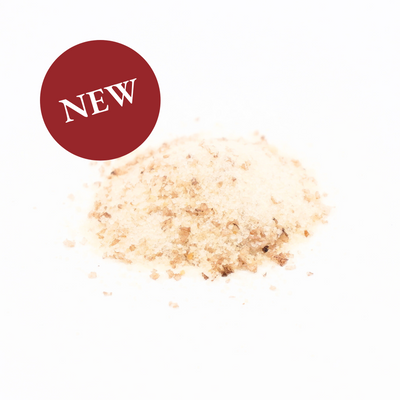Salad Dressings 101
Eating an un-dressed salad is on par with eating plain pasta; you probably could muscle through it, but the addition of a flavourful dressing makes all the difference in the world!
At Evoolution, we pride ourselves on supplying delicious olive oils, balsamic vinegars, gourmet salts and seasonings to create tasty salad dressings to suit any mood. But there is a real science behind why oil and vinegar are the base of salad dressings, and how to mix them to create the perfect topper for your salad. Welcome to Salad Dressings 101.

We all know that oil and water don't mix, and the same goes for oil and vinegar. The two components separate when combined, as they have distinct differences in their chemical structures that mean they do not easily mix together.
Vinegars are classified as hydrophilic compounds, which means "water-loving." You can see this in practice when you mix our delicious white balsamic vinegars into a glass of sparkling water to make an Italian soda. The vinegar mixes right into the water to make a homogenous mixture. On the other hand, oils are hydrophobic, or "water-fearing." As such, oils do not mix into water, rather they sit on top of the water as their density is less than that of the water.

That means, that when you are preparing a salad dressing with oil and vinegar, you want to do your best to emulsify the mixture so it becomes a uniform blend. You can simply whisk the oil and vinegar mixture together to break down each into tiny droplets that disperse better. However, the two liquids will separate rather quickly if you use this approach. That's why recipes often have an emulsifier to bind the two components together for a short time. Mustard, for example, is a common emulsifier that just happens to taste delicious, too! Emulsifiers have components that bear both hydrophilic and hydrophobic ends, which helps bind the vinegar and oil together for a (relatively) extended period of time.
How Much of Each?
Salad dressings typically need three basic elements: fat, acid, and seasoning. In other words, you need oil, vinegar, and salt/seasonings, but the ratios of each can vary widely depending on the salad being made. We don't think there is any one right answer to the question, "how much of each." We have some suggested ratios depending on the type of salad you are dressing, but ultimately you have to listen to your tastebuds for what you like best!
The chart below highlights three of the most common oil and vinegar ratios for different types of salads: Leafy green salad, grain or root veggie salads, and crunchy green salads.

Leafy greens like spinach and arugula can wilt easily, especially if they are dressed with too much balsamic vinegar. As vinegar is acidic, it can break down the greens and make a salad mushy or feeling as if it was over-dressed. As such, we recommend a dressing of 3 parts oil to 1 part vinegar, as the oil doesn't break down the greens in the same way, instead coating them with flavour.
Right in the middle is a 2:1 ratio of oil to vinegar for grainy salads and root vegetables. The inherent sweetness of root vegetables is nicely balanced by the acidity of the vinegar in this style of dressing. The grains of a grain salad will absorb vinegar, so you don't want so much vinegar that the grains become mushy- the oil nicely coats the grains instead.
On the other end of the spectrum from leafy greens are hearty greens such as kale, chard, and cabbage. These crunchy greens can benefit from a bit of break down from the acidity of the vinegar. A 1:1 ratio of oil to vinegar is beneficial for these salads, especially when the greens are massaged with the dressing to soften their brittle side.
See some of these guidelines in action with our favourite salad recipes: a zesty Arugula Salad with Grapefruit and Parmesan, a grainy Grilled Vegetable and Orzo Salad, and a Tuscan Grilled Broccolini Caesar Salad.

Don't Forget the Seasonings!
Lastly, we need the seasoning to complete the salad dressing trifecta of fat, acid, and seasoning. Enter, Evoolution's range of gourmet salts and Silk Road Spice Merchant seasonings. Salt and seasonings take your dressing to the next level and perfectly complement our olive oils and balsamic vinegars.




Hi @Fred, we’ve got you covered! Check out the links in the blog above, or find our “Recipes” tab at the top of our site in the green bar to explore some of our favourites. Enjoy!
Need salad recipes please to go with your oils.
Hi Cassandra, thanks for your question! Mayonnaise is a very handy emulsifier, so you can easily incorporate it into your favourite oil and vinegar-based dressings. You can certainly start with the 2:1 ratio you have described, or go 1:1:1 with oil:mayo:vinegar if you want more of the oil’s health benefits in there, too! Ultimately, experimenting and using your taste buds is the best way to go! Enjoy!
These ratios look handy!
What should I do when making a mayo-based dressing, like for potato salad? Use the 2:1 Mayo to Vinegar (since the mayo has some olive oil in it…)?
Leave a comment